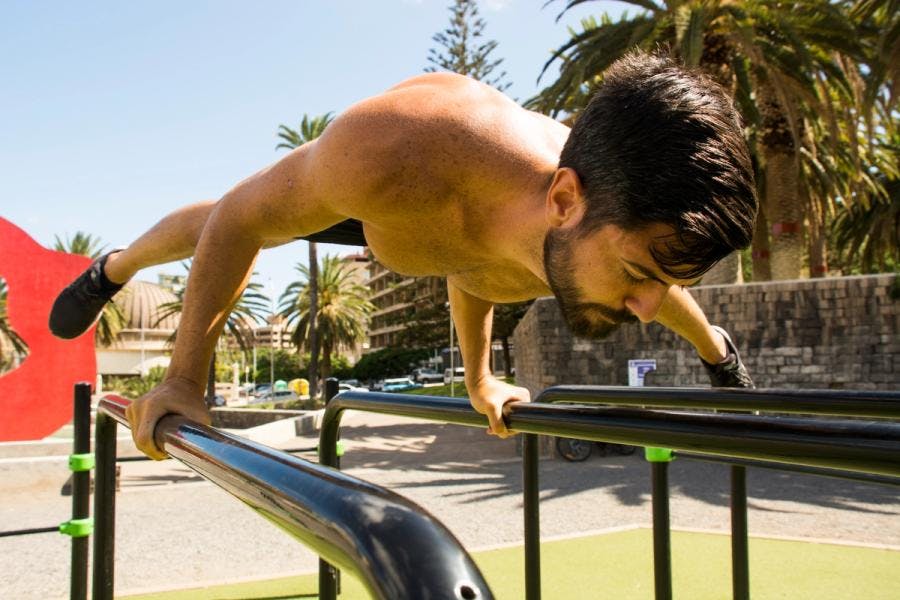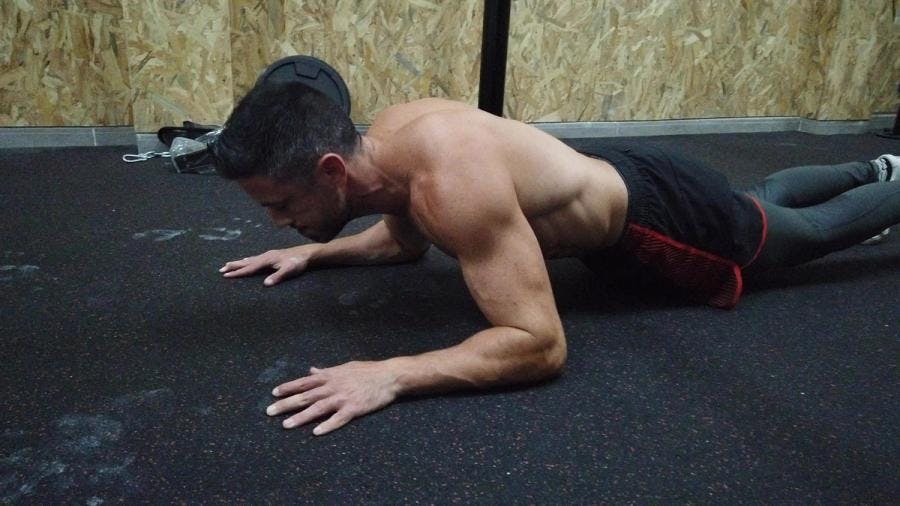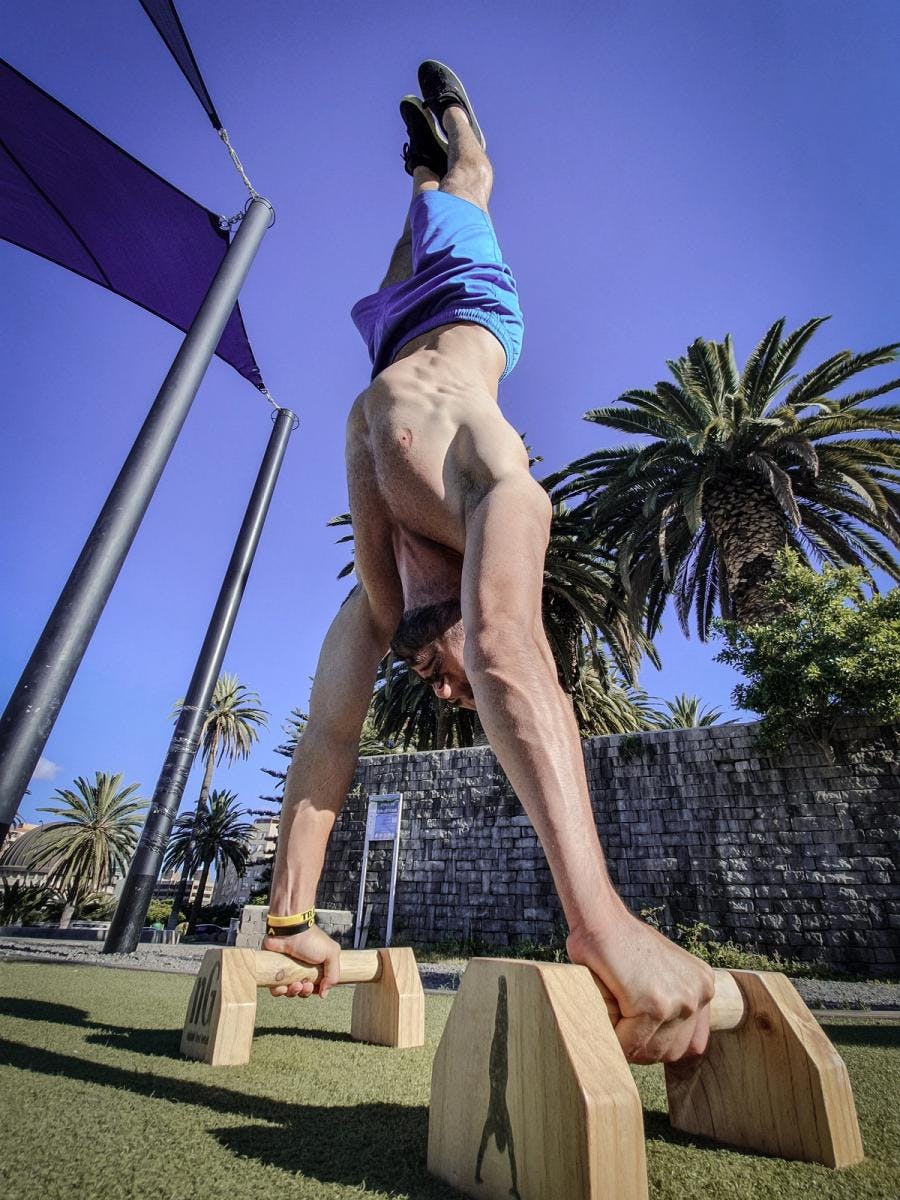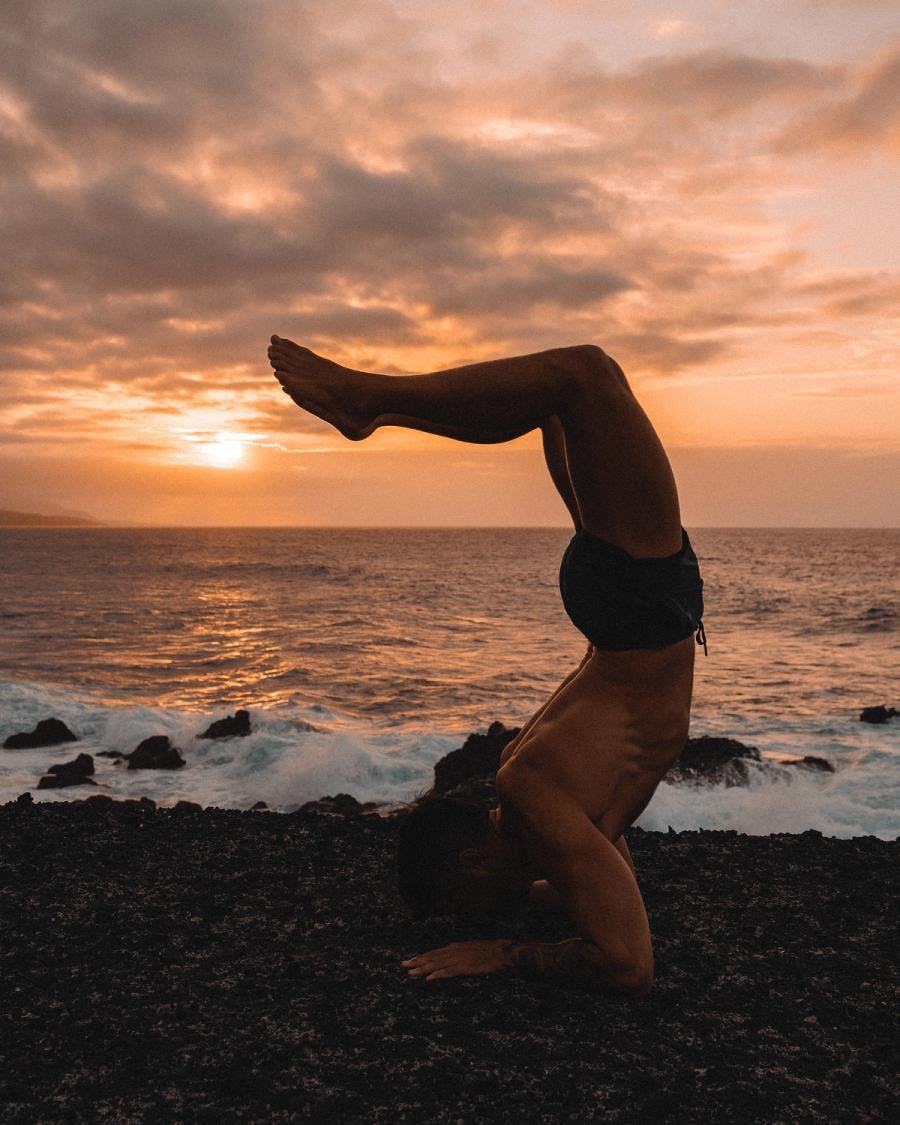
In this article, we propose 6 calisthenics skills in order of increasing difficulty that you can easily practice at home. From beginner skills to more advanced moves without equipment and without leaving your home.
PUSH UP 360

First, we will see the push up 360 that, although it may seem difficult, we will learn it in such a way that, regardless of your level, you will be able to do it and it will look very eye-catching.
To begin with, we get into push-up position, and the first thing we have to do is cross one leg over the other to the side that is most comfortable to you. Then, we raise our hand and put our feet on the ground, we take a little jump bringing our feet towards our back and we get up taking advantage of the fact that we are in a more comfortable position. Once we are up, we follow the inertia of the movement and complete the turn until we reach the ground again.
Once we have repeated this several times and have internalized the movement, we try to make it smoother. The idea is not to stand up, but that we will stay halfway and fall a little faster.
To make the move even more attractive we can do it within a sequence. For example, we can do two slap push-ups and then do a 360 push-up and then another slap push-up.
FROG

Many people do not dare to try it because they think that they are going to fall forward, but we are going to do it in a controlled way so that there is no risk. We squat down, on tiptoe with our legs spread, bend forward a little, bend the elbows and place them on the inner thighs. We gradually lean forward until our feet naturally lift a little off the ground and then we try to keep it balanced. The key is to find a comfortable position of the elbows on the thighs and then we lean forward, without jumping.
TURTLE PLANCHE

This move is a slightly more advanced version of the frog. We place ourselves in the same position as in the frog: squatting and legs spread. We place the palm of our hand outwards on the ground in front of our feet and the other hand further forward and we lean forward. We flex the hand that is near our feet and we try to place the elbow on the belly. Once we have noticed that we have placed our elbow correctly, we open our legs outwards, not backwards, seeking balance parallel to the ground. Once we have fully stretched them and we have pointed our feet, we hold the position for as long as we can.
This move can also be performed on parallels bars and is slightly more comfortable not only because of the position of the wrists, but because there is more room to move. A slightly more advanced version would be to do it with both hands at the same height and both elbows resting on the belly.
RUSSIAN PUSH UPS

The key to executing this move correctly is not to have your feet fixed on the ground, but to jump back a little when you go down and a little jump forward when you return to the starting position. In such a way that we move our hips, but we avoid arching the back. We get into push-up position and perform four moves: a push-up, go backwards, go forwards and then finish the push-up.
HANDSTAND

The idea is to be able to do a free handstand hold, without a wall, using our body control. The first thing we must do to learn in order to do a handstand without a wall is to learn how to fall properly. For this, it is essential to know how to rectify the movement, in such a way that, if we lose our balance, we do not fall on our back and hurt ourselves.
To learn how to fall from a handstand position, it is convenient to know how to do the cartwheel. The next step is to try free handstand hold, with your hands resting on the ground and giving small impulses with your feet. If you have never done it before, the first few attempts take small jumps to feel the weight of your body on your arms. Little by little, we try to look for the vertical and always taking into account the technique of the cartwheel if we are going to fall on our back.
At first, do not try to fully stretch your arms, instead rectify with your elbows and wrists. In addition, it is not advisable to put your head in because you will lose the reference and it is more likely to fall. It is better to learn to handstand by looking at the ground. The key to handstand is perseverance in practice and never give up.
TIGER BEND

This last move requires a more advanced level and it is necessary to master the handstand. It is closely related to Russian push-ups, as far as the procedure is concerned, but in a handstand position: push-up, go back, forward, and raise push-up. The dynamics would be: do a handstand, go down flexing elbows, go backwards, then forward and go up again. Do not try to jump back from the handstand directly, but go down by bending elbows instead.
Another important detail is that every time you go back down, when you come back forward, you have to give an impulse that, in the Russian push-ups we do it with our feet on the ground, but now that we are in a handstand position we will replace it with a kick to the air to get the inertia.
The last thing to take into account is that when we move to the elbows we must maintain our balance. Although there are people who can keep it completely straight, it can also happen that your feet fall to the ground. In this case, what you have to do is arch your body enough to compensate and then be able to come back.
If you want to know how to integrate some of these skills into your routine, Calisteniapp offers you both the handstand program and the handstand Smart Progress routine that includes, in addition to the handstand, both the frog and different progressions.
Autore

Yerai Alonso
Cofundador de Calisteniapp, referente en calistenia y el street workout en Español. Con más de una década de experiencia, es creador de uno de los canales de YouTube más influyentes del sector. Autor del libro La calle es tu gimnasio, campeón de Canarias y jurado en competiciones nacionales e internacionales.
Unisciti alla nostra newsletter
NUOVI ARTICOLI OGNI SETTIMANA
Impara tutto quello che devi sapere sulla calisthenica
Calisteniapp
Inizia l'allenamento di calistenia e street workout
